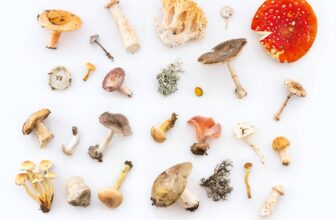
Table of Content
Square foot gardening is a gardening system that allows you to grow more food in less space, resulting in maximized yields and a reduction of waste. This method of gardening involves making raised beds that are about 1.2m (4 ft) squares and filling them with growing matter. The bed is separated into 16 one-foot squares to resemble a grid. Once this is done, a different crop is planted in each little square.
The size of the individual crop usually determines the number of plants that you put in each square. For example, you can plant 16 of a small crop like radish, 4 of a medium-sized crop like strawberries or you can go for one of a large crop like cauliflower or broccoli.
In square-foot gardening, crops are planted much more densely than if they were planted in a row like in traditional vegetable gardens. Once you’ve harvested the squares, you plant a different type of crop which allows for a continuous harvest. This gardening system is very basic and perfect if you’re a beginner.
How to Start Your Own Square Foot Garden
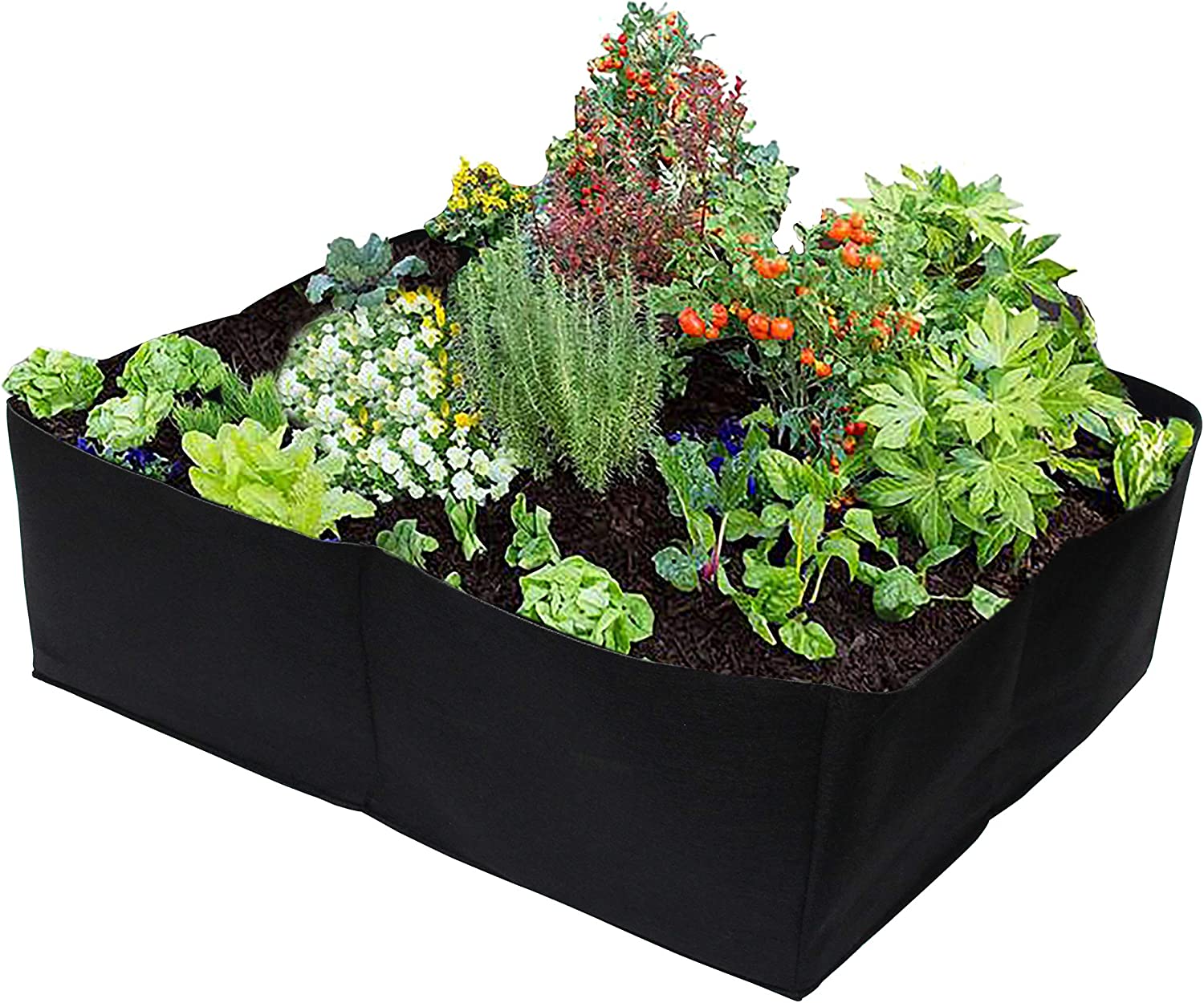
Follow these steps to plan and create your own square-foot garden.
1. Planning
The first thing you need to decide when it comes to planning your own square-foot garden is where to set it up. Although it may be tempting to start big, don’t make this mistake since it will leave you feeling overwhelmed. Keep it as simple as possible to start with. You can always have just one square for your garden which would be more than enough.
Choose a place for your square foot garden that’s close to your house and a water supply if possible. If you have quick and easy access to your garden and water for it, you’re more likely to take good care of your plants, especially when you see them every day.
If you’re planning to set your garden on grass, lay a cardboard cover under its frame to stop the grass from growing through. The best site for a square foot garden is right on top of an existing bed, so that your crops have enough to send roots into.
2. Decide on the Layout
Take a pencil and make a sketch of your square foot boxes to decide which crop goes into which box. Taller crops should be grown at the back so they won’t tower over the smaller ones and create too much shade for them. If you’re not sure what crops to plant, think about what you like to eat or whatever isn’t available in the supermarkets and grow these.
3. Crop Rotation
Although crop rotation may sound like a complicated thing, it’s actually a pretty basic concept. The whole point of crop rotation is to avoid growing and regrowing similar types of vegetables in the same bed. Similar vegetables mean vegetables from the same family and growing them together in the same bed can increase the risk of certain diseases and pests.
Here’s a brief list of plant families to help you plan your crop rotation properly.
- Brassicas (flowering plants): cabbage, kale, broccoli
- Legumes: peas, broad beans, runner beans
- Onions: garlics, leeks, onions, spring onions,
- Potatoes: aubergine, tomato, potato
- Roots: carrot, celeriac, parsnip, beetroot
The best way to keep things simple is by having up to four beds in your garden and practicing crop rotation with one bed for each group and then you can move it along one bed each year.
4. Companion Planting
Ever heard of companion planting before? If you haven’t, don’t get confused because it’s just another simple and straightforward concept like crop rotation. Plants are just like people and have the ability to create relationships that are mutually beneficial. They can be really good at supporting one another to grow.
As an example, some plants like marigolds are fantastic for square foot gardening since they attract hoverflies and ladybirds which help pollinate your crops. Here’s another example: chives have a strong scent and when planted next to carrots, they will mask the sweet smell of carrots, keep away annoying carrot flies.
Some plants can even reduce the incidence of diseases and pests in the neighbouring plants. It’s important to keep in mind not to place those with lower water requirements like Mediterranean herbs next to thirsty plants that you’ll be watering often since the herbs will be over-watered.
5. Build the Boxes and Grids
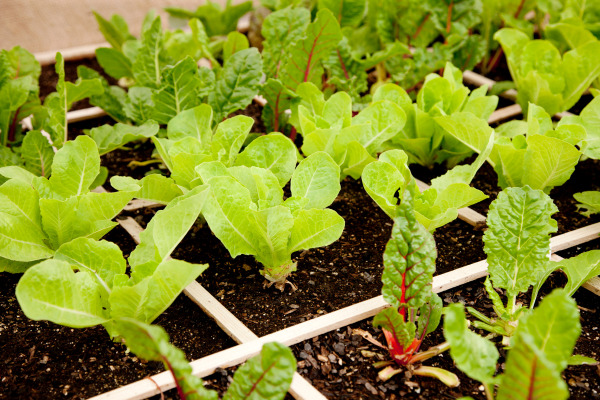
If you prefer to buy a square foot garden kit, there are many options available on the market. However, if you’d rather keep your costs down, you can make the bed on your own using reclaimed wood from used pallets. You can even build the bed with concrete blocks, stones, logs or even bricks. The choice is really up to you.
Once the frame has been put together, make a grid marking each square foot. You can do this using some string since you don’t actually have to divide the soil. You’ll be demarcating the grid on top of the soil as a visual tool.
6. Build Accessories for Your Box
If you’re planning to grow climbing vegetables like runner beans or peas, make some supports for them to help them grow. You can do this using some netting attached to long bamboo sticks that are the right height for your crop. To protect your crops from getting eaten by wildlife such as rabbits, birds and insects, add a wire frame around the box so they will be safe.
7. Fill Your Square Foot Garden Bed
Now your bed’s ready to be filled with the growing medium. Although some people prefer to use a mix of peat moss, compost and vermiculite peat isn’t a very sustainable source of material to use so instead you can go for a mixture of 50% compost (no peat), 25% fine gravel or potting grit and 25% of fine, chipped woodbark. The benefit of using gravel and bark is that it helps improve the drainage and water retention of the mix.
If you have self-made garden compost, you can put some of it into the mix. Garden compost is really easy to make and very healthy for your plants. If you don’t make it, now’s the time to think about it since not only will your plants benefit from it but you will be cutting down on expenses for fertilizer as well.
8. Start Planting!
Now it’s time to start planting in your new square foot garden. Whether you’re planting seedlings or seeds, the main thing is to ensure that you’re placing the correct number of each type of crop into each square of the garden. Let’s have a look at the spacing requirements for some common crops.
- One plant for each square foot – brassicas are plants that need an entire square foot for themselves.
- Four plants for each square foot – plants like basil, leafy greens, parsley and Swiss chard have been intensively planted this way, and harvesting them as they grow will keep them under control.
- Nine plants for each square foot – carrots, garlic, radishes and spring onions are examples of plants that you can grow intensively with a spacing of 3 inches.
Pros and Cons of Square Foot Gardening
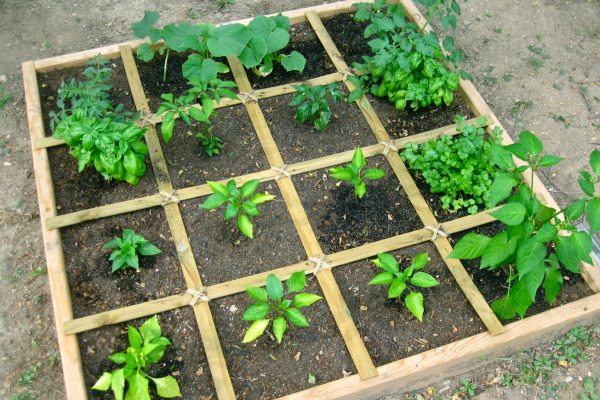
Just like any other gardening system, square-foot gardening has pros and cons to it, and analysing these will help you to decide on your own garden including the style you’re using as well as the requirements and preferences. Let’s first take a look at the benefits of square-foot gardening.
Pros of Square Foot Gardening
Higher yields: plants that grow in small spaces are known to give higher yields, meaning that a great amount of food can be grown using this system, rather than if they’re grown in traditional rows with comparable space.
Quick to set up: square foot gardening is a faster way to start a new garden, making it a great option for first-timers. You can easily place your raised bed anywhere you like, whether it’s on a pavement or on your grass and in a few hours you’ll be ready to plant!
Minimal maintenance: since square foot gardens are small, they require very little maintenance in comparison to other gardens. It would take you all of a few minutes on any given day to plant, maintain and harvest your little garden.
Minimizes weeding: if your square foot garden is filled with a soil-less mix, you’ll have a few seeds in it and no weeds to pull out. However, as the seeds blow or fall into the bed over time, weeds will become more common.
Perfect if you don’t have gardening space: square foot gardening is a convenient way of growing plants since you don’t need much space at all to do it. It can be easily done even in very small spaces and you’ll still get the same (if not better) results as from a traditional rowed gardening.
Reduces pests and disease: when you grow several different crops together, it’s known as a type of companion planting which increases biodiversity reduces the threat that’s posed by pests and disease.
Cons of Square Foot Gardening
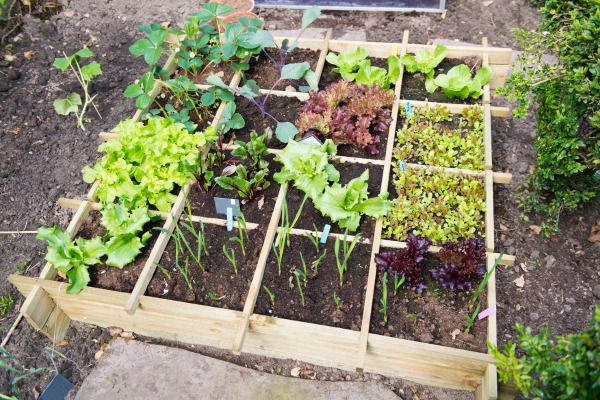
High starting cost: the initial cost of building even the smallest raised bed and filling it up with a soil-less mix can be rather high once everything is added up. If good soil is available, stick to using it instead of going of purchasing soil mixes to cut down your expenses.
Cramped beds: if you’re planning to plant crops that require a lot of room to grow such as asparagus or sweet corn, a small square foot garden bed won’t work for you. Rather than larger sized crops, opt for smaller ones or more compact ones like carrots and radishes since these don’t need a lot of room, and keep the larger crops for planting in a traditional garden.
Not enough depth: although the recommended depth for square foot gardens is 6 inches, it’s too shallow for most plants especially ones whose roots extend into the soil down below. The best solution for this problem is to make your garden frame a minimum of 12 inches deep and fill it all the way to the top with the mix.
More watering: soil in square-foot garden beds usually dry out much faster than traditional garden soil and is harder to wet once it’s dried. This can be a bit of a problem since you may end up having to water it every day especially in the summer to keep your plants thriving. Installing soaker hoses or another type of drip irrigation system could help with this and using organic mulch to cover the soil surface is also a great way of conserving moisture.
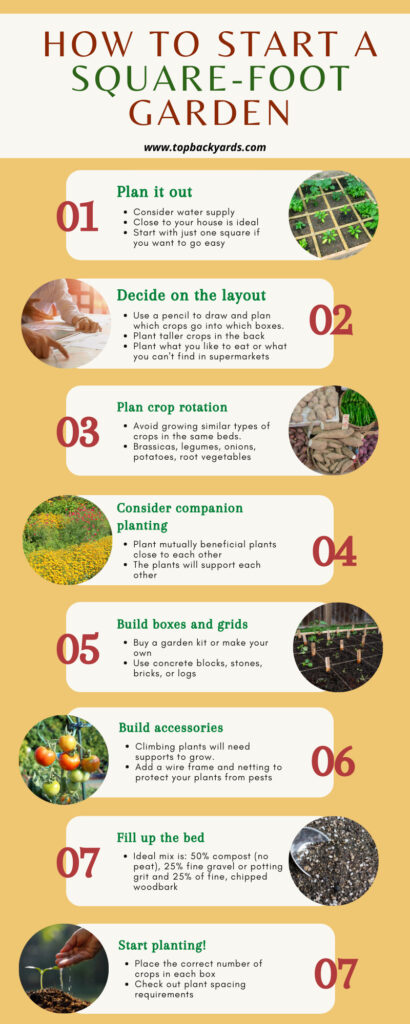
FAQ’s about Square Foot Gardening
Square foot gardening is a method of growing vegetables and herbs in a small space using raised beds divided into square-foot sections.
You can start with as little as 4×4 feet of space for a single square foot garden bed, and expand as much as you like depending on your available space.
Square foot gardening allows you to maximize yields in a small space, minimizes waste, and is easier to manage compared to traditional gardening methods.
Mixing high-quality compost and vermiculite or perlite with your existing soil is the key to creating a nutrient-rich and well-draining soil for your square foot garden.
You can grow a wide variety of vegetables and herbs in a square foot garden, including lettuce, spinach, tomatoes, peppers, carrots, and many others.
Yes, square foot gardening is ideal for container gardening and can be adapted for use on a balcony or small patio.
Water your square foot garden deeply once or twice a week, depending on weather conditions and the specific needs of your plants.
Practicing good sanitation, using companion planting, and regularly inspecting your plants for signs of pests or diseases are all effective methods for preventing problems in your square foot garden.
The Take-Away
Square foot gardening is a highly efficient and productive method of growing vegetables and herbs in a small space. By utilizing raised beds, proper spacing, and companion planting techniques, square-foot gardening allows for maximum yields while minimizing waste and effort.
Whether you’re an experienced gardener or just starting out, square-foot gardening is a great way to get the most out of your garden.




